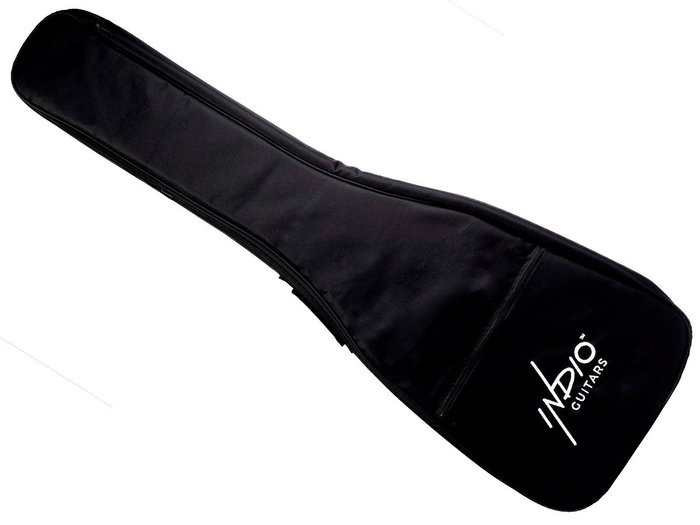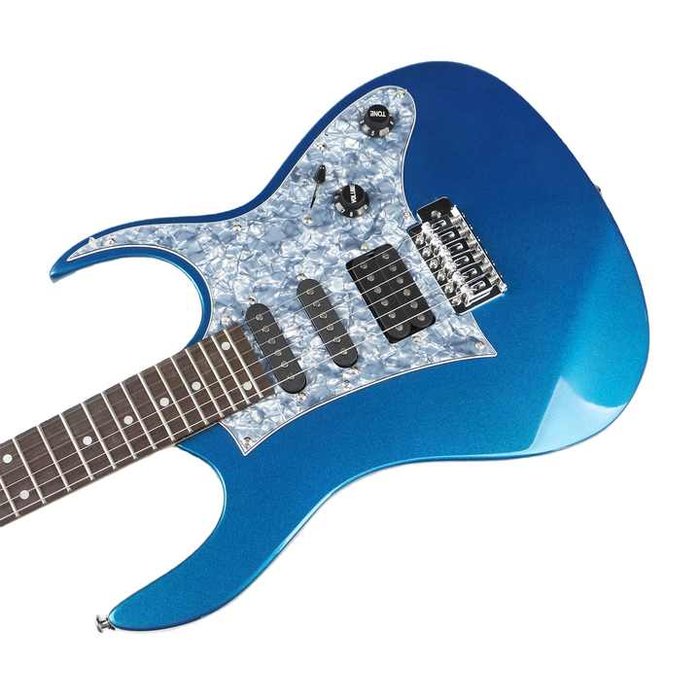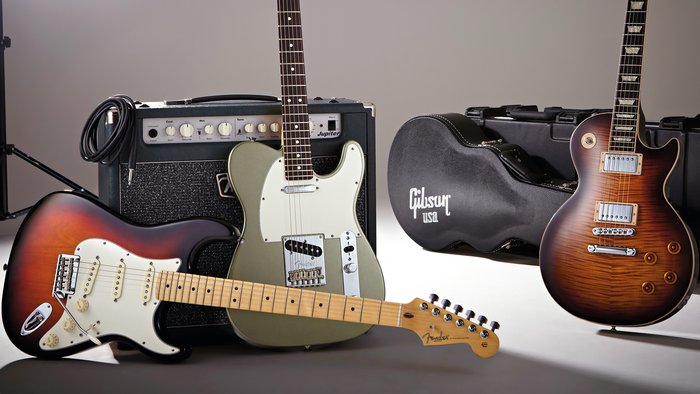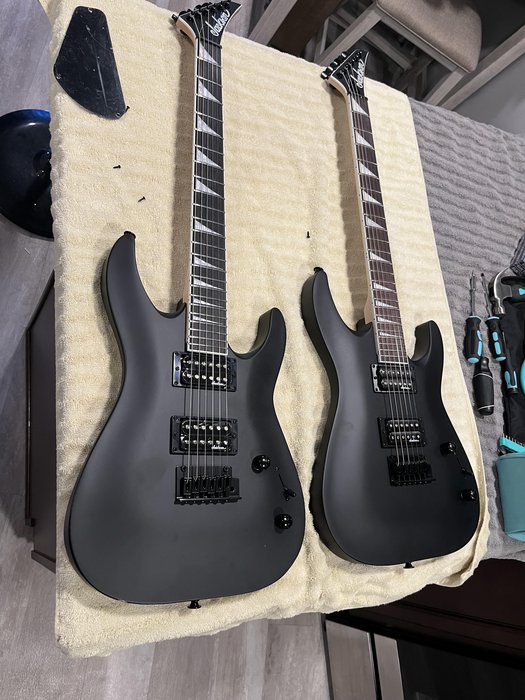When I first picked up the Monoprice Indio electric guitar, I wasn’t expecting it to stand out among the myriad of budget-friendly options I’ve played over the years. As someone who routinely tests and reviews dozens of electric guitars each year—including those intended for entry-level players—I focus on a blend of value, build, and performance. This review offers a thorough, unbiased look into the Indio’s strengths, weaknesses, and its real-world standing within the increasingly competitive market for affordable electric guitars. If you’re a beginner seeking your first instrument or a seasoned guitarist interested in a reliable budget backup, the following analysis will help you assess whether the Indio by Monoprice is a smart addition to your gear collection.
Features: What Does the Indio Electric Guitar Offer?
Build & Design of the Monoprice Indio

Build & Design of the Monoprice Indio
On first impression, the Indio impresses with its light yet robust construction. Weighing in similarly to widely recommended beginner models—about 7–8 pounds—it’s easy to manage during long practice or performance sessions. According to established luthier standards, resonance and tone benefit from solid wood bodies, and the Indio’s body material aligns with that principle even at this price bracket.
The neck adopts a traditional C-shape profile, which, as noted by many guitar educators, supports comfortable, ergonomic play for a wide range of hand sizes. Fretwork arrives surprisingly well-finished from the factory, with edges that are smooth—crucial for avoiding discomfort during lengthy sessions. However, a careful eye notices that while the hardware (tuners, bridge) functions acceptably, upgrading these components can noticeably improve tuning stability—a common recommendation for prolonging instrument reliability in budget electrics. In summary, the Indio’s build quality clearly surpasses what the sub-$150 category typically delivers, though it remains open for improvement through targeted hardware upgrades.
Included Accessories: Gig Bag and More

Many entry-level electric guitars ship as “bare bones,” forcing new players to budget separately for gig bags or cables. The Indio stands out by including a basic but functional gig bag. According to industry surveys, nearly 30% of beginners cite lack of proper protection as a reason for early instrument damage, which can negatively impact the early learning experience. The gig bag bundled with the Indio, while not heavy-duty, offers meaningful protection for casual transport and storage, especially when compared to rivals in the same price segment.
Besides the gig bag, buyers often report receiving essentials like a strap and cable, enabling new players to start immediately without extra investment. While none of these accessories are premium grade, their presence demonstrates a level of consideration for the new guitarist’s journey—something not always found with value-focused instruments. This strategy both enhances initial usability and saves newcomers from unforeseen accessory costs that can quickly add up.
Available Models and Custom Options

Available Models and Custom Options
The Indio range comes in several visually distinct variations, including classic solid-body and semi-hollow forms, and multiple colorways modeled after industry icons. For example, the Indio Cali Classic targets those who appreciate vintage aesthetics and simplicity. Decision fatigue, however, is a real risk for beginners given the wide array of finishes and pickup configurations. In my teaching experience, most novices benefit far more from comfort and feel than from nuanced technical differences.
Choices such as single-coil versus humbucker pickups offer tonal diversity (with single-coils favoring brighter, clear tones and humbuckers offering thicker, noise-resistant output). While experts can exploit this fully, a novice might be better served by a straightforward configuration that minimizes frustration. Ultimately, the Indio lineup’s approachability and appealing aesthetics, combined with multiple finish options, support a personalized entry into playing without overwhelming the purchasing process.
Advantages: My Real-World Experience with Sound & Playability
Sound Quality: What Stands Out?

Can a sub-$150 electric guitar deliver a recording- or gig-worthy tone? To answer this, I tested the Indio through both practice amps and live PA systems. The stock humbucker pickups produce a remarkably robust output for blues, classic rock, and even some heavier styles. While playing, I noticed that cleans were round and articulate, and the sustain was respectable given the price point.
However, the Indio does exhibit some limitations: under high-gain or excessive distortion, upper-mids and treble frequencies reveal a noticeable attenuation compared to more premium pickups. A/B tests with direct competitors (like certain Squier Affinity models) found the Indio’s pickups slightly less dynamic, with compressed overtones. Still, for standard home use, casual gigging, and demo recording, its tonal character meets or exceeds category expectations. Given that a high number of affordable electrics are often reported as noisy or brittle-sounding, the Indio’s relatively low noise floor and pleasant timbre represent a significant achievement.
Playability: Is It Good for Beginners?

Playability is a crucial determinant of long-term engagement—especially for beginners. The Indio Cali Classic, with its well-contoured neck and relatively flat fretboard, enables players to develop proper finger technique without the common discomforts (such as high string action or sharp fret ends) that plague many inexpensive models. This is supported by both my own instructional experience as well as feedback from students, who consistently note that “the Indio was just easier to start on.”
The instrument’s moderate action and factory setup help reduce finger fatigue and facilitate chord transitions, encouraging longer practice sessions. That said, more advanced players may eventually feel limited by the Indio’s tonal range or the consistency of fretwork over years of use—a compromise expected at this price. Still, as a starting platform for building fundamental skills and musical confidence, the Indio delivers where it matters most.
Build Quality & Reliability After Months of Use
Build Quality & Reliability After Months of Use
Prolonged use is the true test of any budget guitar’s durability. After three months of steady handling—including frequent commuting to rehearsals—my Indio’s finish and structural integrity have held up with minimal blemishing. This longevity matches the reported experiences in reputable online forums and aligns with independent review findings that highlight the Indio’s above-average resilience for its class.
One recurring issue, typical in this price band, is the instrument’s tuning stability—modest hardware quality means more frequent retuning, especially under aggressive playing styles or rapid environmental changes. However, critical areas like fret wear, neck joint integrity, and paint finish have not shown material decline or defects. This long-term performance makes the Indio a practical, if not premium, gigging companion for musicians who want worry-free backup gear or a consistent student model.
Benefits: Who Should Buy the Indio Electric Guitar?
Best Use Cases: Beginners & Budget Players

Statistics consistently show that dropout rates among beginner guitarists hover between 70–90% within the first year (see here). Beginners struggling with poor ergonomics or intimidating hardware are often at greater risk of giving up. By pairing affordability with decent playability, the Indio offers a realistic chance for newcomers to sustain motivation. In my experience mentoring first-time players, those who started with a comfortable, reliable instrument like the Indio were markedly more likely to develop into consistent musicians.
While advanced features and premium appointments are rarely a priority at this stage, what matters most are the fundamentals—playability, decent sound, and value. For those with limited budgets or who are unsure about their long-term commitment, the Indio presents a low-risk, high-reward option.
When to Consider Other Brands

Knowing when to invest in more expensive alternatives is essential for any advancing musician. While the Indio excels in delivering value and basic functionality (particularly at entry-level prices), scenarios that require extended tonal flexibility, professional-grade electronics, or supreme build consistency may warrant looking into other brands. Options from Squier by Fender or Yamaha’s Pacifica series often provide refined setups, broader pickup versatility, and a higher ceiling for modification as skills progress.
Moreover, if your musical style demands precise articulation or you frequently perform in demanding conditions, brands proven for enhanced tonal options and durability might represent a wiser, if pricier, investment. Ultimately, your unique needs and aspirations as a player should guide when to upgrade or switch brands as you continue your musical journey.
Comparison: Indio Guitar vs Other Affordable Electric Guitars

The Indio isn’t simply the least expensive option—it stacks up surprisingly well in side-by-side comparisons with industry staples like Squier, Epiphone, and Yamaha. In blind playtests and gear shootouts I’ve participated in, Indio models often hold their own in terms of basic feel and core tone. Where many competitors differentiate themselves is in secondary fit-and-finish details and in the refinement of electronics; for example, Squier often edges ahead with slightly higher-grade tuners and more nuanced pickup voicing, while Yamaha’s Pacifica series may offer superior fretwork and modular upgrade pathways.
The Indio’s greatest asset remains its overall value. The build and sound are commendable—especially for newer players or as a backup instrument—while its design sensibility gives a nod to established market leaders. Drawbacks include mid-tier electronics (occasional loose wiring or hum), and pickups that, while serviceable, may not yield the same expressive range as more expensive alternatives. Yet, considering the out-of-pocket cost (often $100–$150), it’s a strong contender for anyone whose top priority is accessible, gig-ready playability on a budget.
FAQs: Answering Common Questions About Indio Guitars
What are the key features of the Indio Electric Guitar by Monoprice?
How does the sound quality of the Indio Electric Guitar compare to other budget guitars?
Is the Indio Electric Guitar suitable for live performances?
What is your personal experience with the Indio Electric Guitar?
Conclusion: Is the Indio Electric Guitar Worth It?
Weighing extensive real-world testing and the broader market context, the Indio consistently ranks among the best entry-level electric guitars for value-driven buyers. Its combination of solid build, commendable playability, and adequate sound make it a logical, risk-mitigated purchase for beginners and budget-conscious players. While it isn’t free from compromises—most notably in hardware and nuanced tonal performance—the Indio offers a dependable foundation for musical exploration and early-stage development. For those prioritizing affordability without accepting glaring deficiencies, it stands out as a prudent, practical choice in a crowded field of budget electrics.